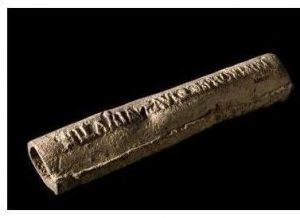The Cross Bronx Expressway is known as one of the most congested roadways in all of the U.S. Some might not know, however, of the displacement and destruction it created. Study into the expressway raises more questions about how great of an impact it has had on the social and economic problems in the Bronx leading up to today (Ploschnitzki 2017).
When Robert Moses decided to build the Cross Bronx Expressway in the late ‘40s, he was trying to erase and deny the cultural significance and vibrancy of areas such as East Tremont that were to be demolished. The documentary series New York: A Documentary Film explores the disconnect between the actuality of Bronx neighborhoods and how Moses presented them. East Tremont, for instance, was a low-income area but was self-sustaining both culturally and materially (Burns 2001). Moses, however, presented the area as if little were going on and that he would have little trouble displacing residents (Burns 2001). Upon receiving criticism and protest from those in threat of displacement, Moses says in an interview, “New York has too many critics, we ought to get rid of some of them” (Burns 2001).
Quite literally, Moses got rid of his critics by displacing more than 1,500 families to build the 7-mile expressway (Sedensky 2001). The massive trench created during construction (Figure 1) is the result of the destruction of Bronx homes. Though Moses could have built along another route that would have displaced far fewer residents and cost much less money (Ploschnitzki 2017), his massive project was a showing of power in the face of displaced residents. The ruination of these homes created immense grief for displaced residents, who could now do nothing to stop Robert Moses.
Anthropologists and critics argue about how much affect the expressway had on the Bronx’s turmoil in the 1970s and ‘80’s, but it is significant to consider. The expressway acts as a boundary that solidifies the cultural and economic differences of the north and south Bronx. As a direct result of the expressway, those that could move out did, while living conditions were worsened and drugs and violence rose in the South Bronx. This likely accelerated the economic turmoil known as the burning of the Bronx (Figure 2), whereby landlords burned down South Bronx apartments for profit and left much of the Bronx in ruin. Vivian Vázquez, who grew up in South Bronx in the ‘70s, explains that “What people learn on the outside is that the people in the Bronx burnt it; that it was us who destroyed our community” (Ricciulli 2019). In this instance, corrupt politics hide from public blame, which can be framed on the community itself.
Study into the South Bronx shows a history of neglect of immigrant, Jewish, and African American residents. The Bronx is also an example of how immense political power (in the form of Robert Moses and otherwise) can use ruination to disenfranchise low-income residents.
References
Ploschnitzki, Patrick
2017 Robert Moses, the Construction of the Cross Bronx Expressway and its impact on the Bronx. University of Arizona. December 11, 2017.
Accessed November 9, 2019.
Burns, Ric
2001 New York: A Documentary Film. “The City and the World.” PBS. October 1, 2001.
Accessed November 10, 2019
Ricciulli, Valeria
2019 In the 1970s the Bronx was burning, but some residents were rebuilding. Curbed. May 3, 2019.
https://ny.curbed.com/2019/5/3/18525908/south-bronx-fires-decade-of-fire-vivian-vazquez-documentary
Accessed November 10, 2019.
Sedensky, Matt
2001 Decades Later, Doing the Cross Bronx Expressway Right. The New York TImes. October 7, 2001.
Accessed November 10, 2019.
Images
Figure 1
http://dcmny.org/islandora/object/bronxbusiness%3A249
Figure 2
https://www.jacobinmag.com/2019/08/decade-of-fire-film-south-bronx-nyc
Further Reading
Fires in the Bronx and what caused them:
A deeper dive into the South Bronx by the New York Times: https://www.nytimes.com/1999/02/14/realestate/a-south-bronx-very-different-from-the-cliche.html
Costs and benefits of the Expressway:


